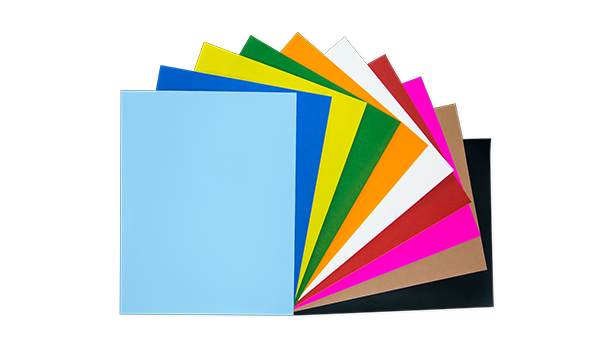Use Blank Labels for mailing.
Use Blank Labels for mailing.
Blog Article
Understanding How Blank Labels Job to Enhance Your Labeling Experience
Recognizing the mechanics of blank labels is crucial for enhancing your labeling practices across various contexts. To fully understand just how these labels can change your processes, one need to consider the various types available and the myriad methods they can be personalized to fit particular needs.

Benefits of Utilizing Blank Labels
Blank labels use a flexible solution for different classifying needs, making them very useful in both individual and specialist settings. Their adaptability allows users to produce tailored labels tailored to particular requirements, enhancing organizational performance. Whether used in home workplaces, retail environments, or industrial applications, blank labels promote the identification and categorization of products, records, and individual products.
One considerable advantage of blank labels is their cost-effectiveness. By allowing users to print only the labels they need, waste is decreased, and supply administration comes to be more workable. Furthermore, blank labels work with different printing approaches, including inkjet and laser printers, making them obtainable for different individuals.

Additionally, the usage of blank labels simplifies the process of updating information, as customers can quickly publish new labels to change obsolete ones, making sure that all items and files are precisely identified. Overall, blank labels offer a useful and effective labeling service for diverse applications.
Types of Blank Labels Available
What options are available when it comes to blank labels? Blank labels come in a range of types, each matched for various applications and preferences.
One more prominent choice is synthetic labels, commonly made from products like polyester or plastic. These labels are understood for their longevity and resistance to water, chemicals, and tearing, making them appropriate for severe environments. They are commonly utilized in commercial settings or for labeling products that might be subjected to dampness.
Furthermore, there are thermal transfer labels, which call for a printer that uses heat to move ink onto the label surface. These labels are preferred for their premium print and long life.
Lastly, specialty labels cater to specific needs, such as detachable labels for momentary use or high-temperature labels for extreme problems. Comprehending these choices enables customers to pick one of the most appropriate blank label for their distinct labeling needs.
Personalization Options for Labels
A broad variety of personalization choices is offered for labels, enabling individuals to customize them to specific demands and branding requirements. Users can select from different dimensions, shapes, and materials to ensure that the labels efficiently fit their designated purpose. Typical materials include paper, polyester, and vinyl, each providing different degrees of resilience and aesthetic appeal.
Color choices play a vital role in personalization, making it possible for brand names to preserve uniformity with their business identity. Users can choose from a spectrum of shades or perhaps choose for personalized printing to match certain branding components. Additionally, labels can be published with unique layouts, logo designs, and message, enhancing brand name acknowledgment and visual effect.
One more crucial element is the option of adhesive. Tags can be designed with long-term, detachable, or repositionable adhesives, depending on the application needs. This flexibility enables reliable labeling options throughout different atmospheres, from retail to industrial setups.

Tips for Effective Labeling
Effective labeling exceeds customization; it likewise entails calculated considerations that improve functionality and communication. To accomplish effective labeling, start by plainly specifying the purpose of each tag. Think about the details that needs to be communicated and ensure it exists in a straightforward manner. top article Utilizing succinct language and staying clear of jargon can substantially enhance comprehension.
Next, focus on presence by selecting appropriate shades and typefaces. High contrast in between text and background improves readability, while bigger typefaces promote quick recognition. Furthermore, make certain that labels are placed in a constant and sensible manner, making it easier for users to locate and translate details.
Think about the sturdiness of labels. Choose products fit for the specific environment where the labels will be utilized, whether it be inside your home or outdoors. Waterproof or tear-resistant options may be required depending on the context.
Lastly, frequently review and update your labels to show any changes in info or use. This positive approach not just keeps clarity yet likewise stays clear of confusion in time. By complying with these ideas, you can make best use of the performance of your labeling initiatives, ensuring they offer their designated objective successfully.
Applications of Blank Labels
Blank labels use various applications throughout different markets, making them a very useful device for company and communication. These flexible labels are frequently utilized in warehouses for stock management, allowing a knockout post organizations to quickly identify and track products. By using blank labels to storage space bins, racks, or pallets, firms can streamline their operations and decrease the likelihood of mistakes.
In the healthcare industry, blank labels play a critical duty in labeling medications and clinical supplies, guaranteeing proper identification and usage. Personalized labels can include essential information such as dosage, expiry days, and patient information, improving safety and compliance.
In retail, blank labels help in pricing products, providing promos, or identifying shelf areas, which eventually boosts the client experience. They permit fast updates to pricing or item information without the requirement for pre-printed labels.
Moreover, blank labels are useful for individual use, such as arranging home workplaces, crafting, or labeling food containers. Their versatility allows people to produce tailored solutions that satisfy certain demands. In general, the applications of blank labels are comprehensive, emphasizing their value in fostering effectiveness and quality in different setups.
Conclusion
In conclusion, blank labels provide a flexible and reliable remedy for different classifying demands. Ultimately, the integration of blank labels into functional processes adds to more info here improved effectiveness, making them an indispensable resource for both individual and specialist use.
Report this page